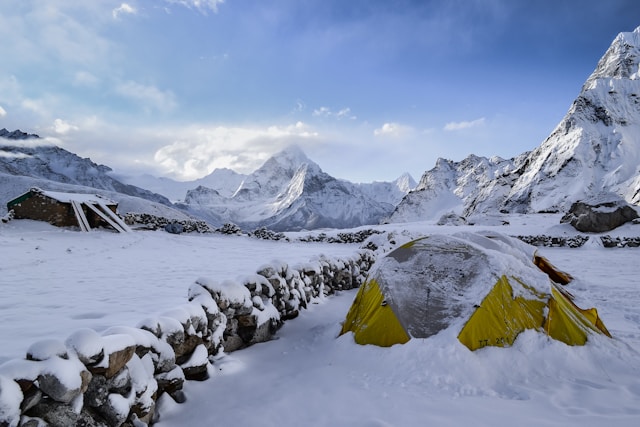Climbing Mount Everest, the highest peak on Earth, stands at a staggering 8,848 meters (29,029 feet). It’s a monumental achievement that tests the boundaries of human endurance, skill, and determination. Despite advancements in climbing gear and technology, the journey to the summit is still filled with challenges. Let’s explore some of the challenges and fears of climbing the Mount Everest.
1. The Perils of Extreme Altitude
Everest’s towering height means climbers must endure the harsh effects of high altitude. Above 8,000 meters, often called the “death zone,” the air is so thin that the body struggles to get enough oxygen. This can lead to altitude sickness, with symptoms like headaches, nausea, and dizziness. In severe cases, it can cause life-threatening conditions such as high-altitude pulmonary edema (HAPE) and high-altitude cerebral edema (HACE).
2. Battling Unpredictable Weather
The weather on Everest is notorious for its unpredictability and can change rapidly. Climbers must contend with freezing temperatures, high winds, and heavy snowfall. Storms can trap climbers at high altitudes, leading to frostbite, hypothermia, and even death. The narrow window of favorable weather in late spring and early autumn adds to the pressure, as climbers must time their ascent perfectly to avoid dangerous conditions.
3. Overcoming Physical and Mental Exhaustion
The climb to the summit of Everest is a grueling physical and mental challenge. Climbers must be in peak physical condition to endure the long hours of climbing, often carrying heavy packs and equipment. The thin air makes every step exhausting, and the mental strain of pushing through extreme fatigue, fear, and doubt can be overwhelming. Training for months, or even years, in advance is essential to prepare the body and mind for the rigors of the climb.
4. Navigating Technical Climbing Challenges
Everest presents a variety of technical climbing challenges that require skill and experience to navigate safely. The Khumbu Icefall, a treacherous section of the climb, is composed of shifting ice towers and deep crevasses that pose a constant risk of avalanches and icefalls. The Hillary Step, a nearly vertical rock face near the summit, demands precise climbing techniques and nerves of steel. Proper acclimatization and practice on lower peaks are crucial for tackling these obstacles.
5. Facing the Risks of Avalanches and Seracs
Avalanches and seracs (large blocks of ice) are constant hazards on Everest. The Khumbu Icefall is particularly notorious for its instability, with shifting ice and frequent avalanches posing significant dangers to climbers. In 2014, an avalanche on the icefall claimed the lives of 16 Sherpas, highlighting the perilous nature of this part of the climb. Climbers must navigate these risks with caution, relying on the expertise of their guides and their own judgment.
6. Dealing with Crowding and Congestion
In recent years, the popularity of climbing Everest has led to significant crowding on the mountain. During peak climbing seasons, hundreds of climbers attempt to summit simultaneously, leading to traffic jams on narrow sections of the route. This congestion not only increases the risk of accidents but also prolongs exposure to the harsh conditions of the death zone. Waiting in line for hours at high altitude can lead to severe health issues and jeopardize the chances of a successful summit.
Conclusion
Climbing Mount Everest is an extraordinary challenge that demands physical prowess, mental fortitude, and meticulous preparation. The allure of standing on the highest point on Earth drives many to take on this formidable endeavor, despite the inherent risks. For those who succeed, the journey offers unparalleled rewards and a profound sense of achievement. However, it is crucial to approach the climb with respect for the mountain’s power and an unwavering commitment to safety, knowing perfectly the challenges and fears of climbing Everest .

